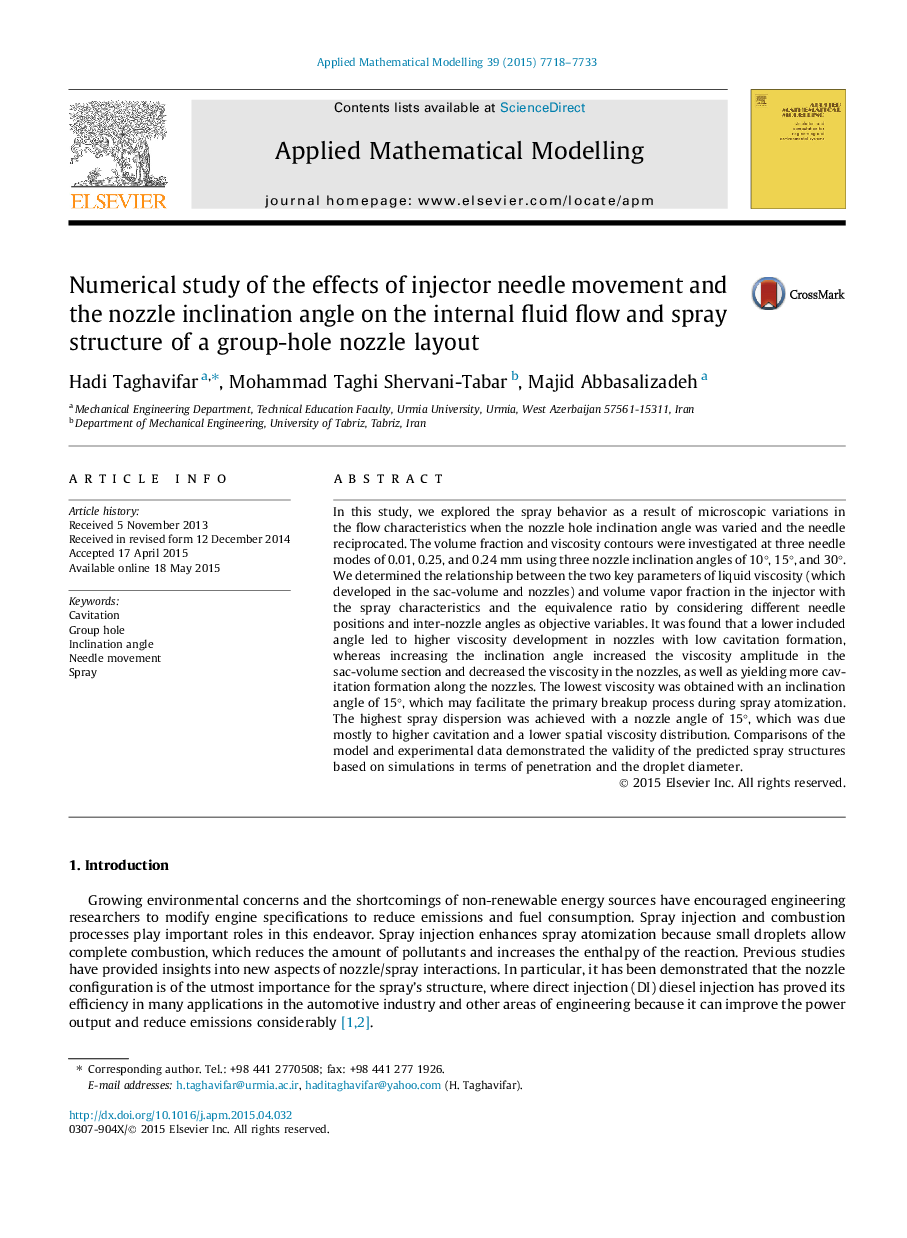| Article ID | Journal | Published Year | Pages | File Type |
|---|---|---|---|---|
| 1703032 | Applied Mathematical Modelling | 2015 | 16 Pages |
In this study, we explored the spray behavior as a result of microscopic variations in the flow characteristics when the nozzle hole inclination angle was varied and the needle reciprocated. The volume fraction and viscosity contours were investigated at three needle modes of 0.01, 0.25, and 0.24 mm using three nozzle inclination angles of 10°, 15°, and 30°. We determined the relationship between the two key parameters of liquid viscosity (which developed in the sac-volume and nozzles) and volume vapor fraction in the injector with the spray characteristics and the equivalence ratio by considering different needle positions and inter-nozzle angles as objective variables. It was found that a lower included angle led to higher viscosity development in nozzles with low cavitation formation, whereas increasing the inclination angle increased the viscosity amplitude in the sac-volume section and decreased the viscosity in the nozzles, as well as yielding more cavitation formation along the nozzles. The lowest viscosity was obtained with an inclination angle of 15°, which may facilitate the primary breakup process during spray atomization. The highest spray dispersion was achieved with a nozzle angle of 15°, which was due mostly to higher cavitation and a lower spatial viscosity distribution. Comparisons of the model and experimental data demonstrated the validity of the predicted spray structures based on simulations in terms of penetration and the droplet diameter.
